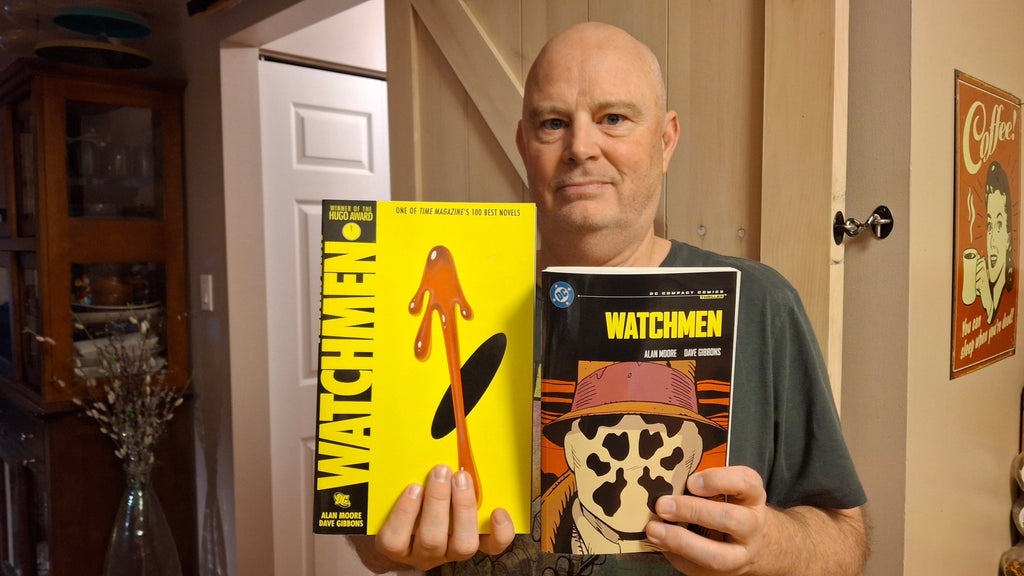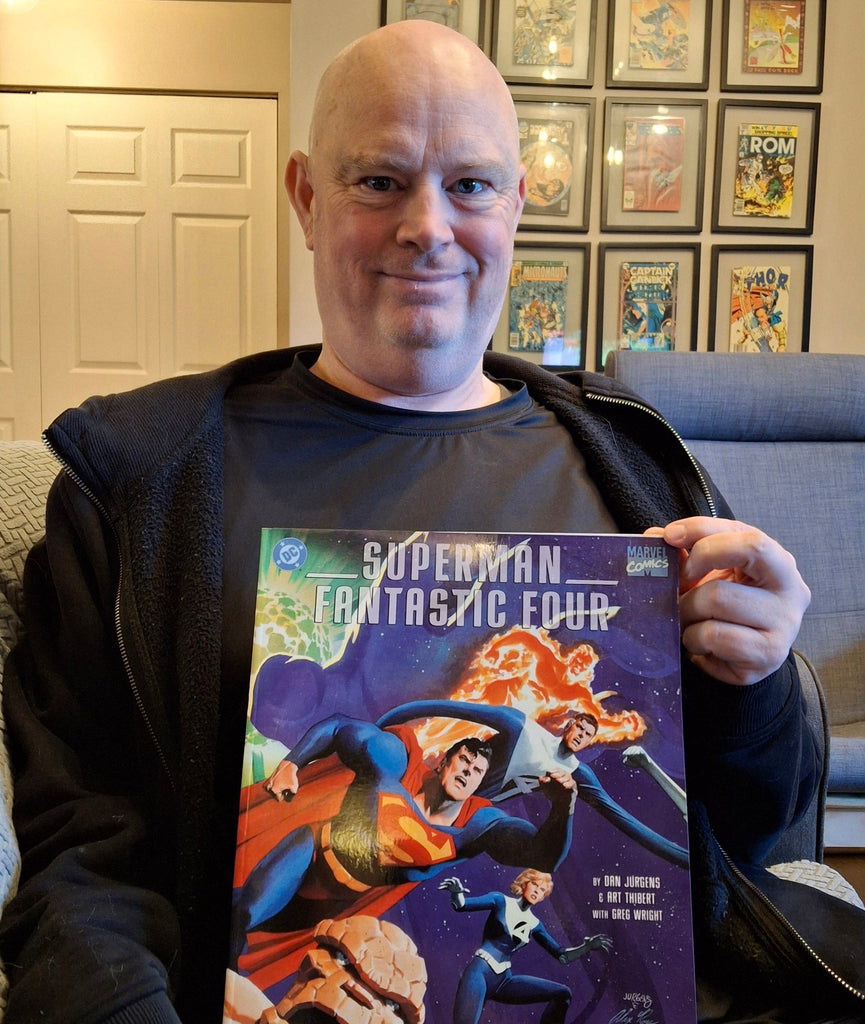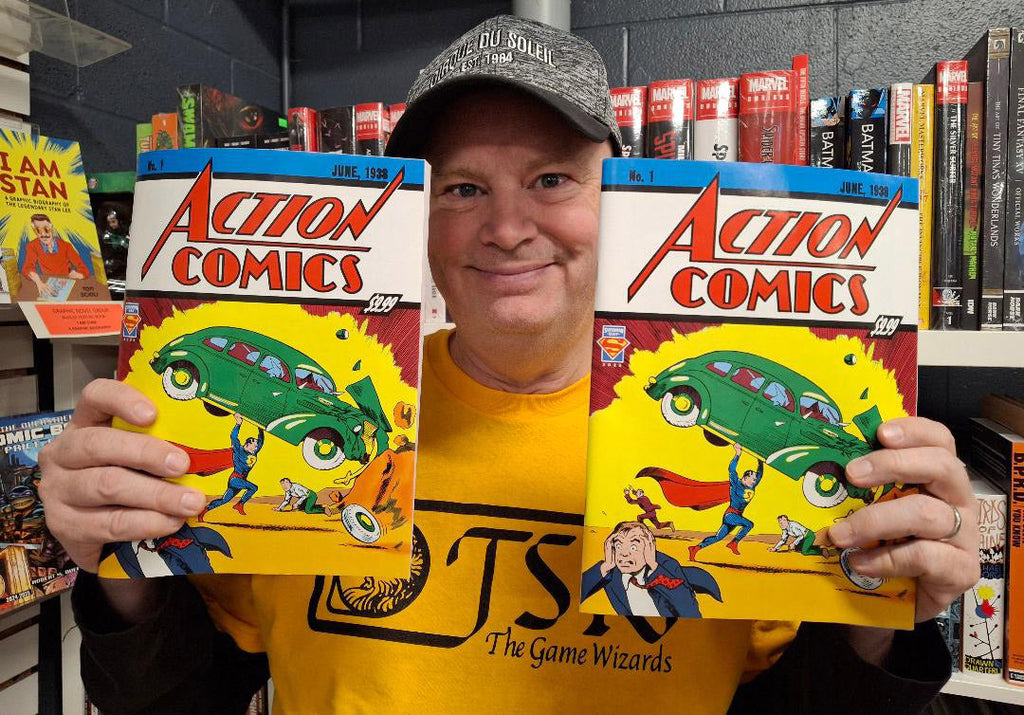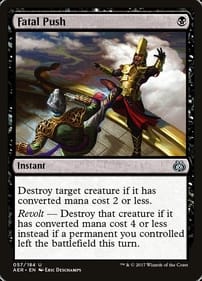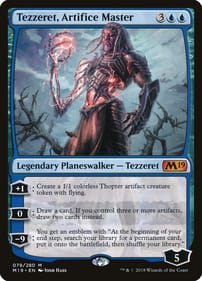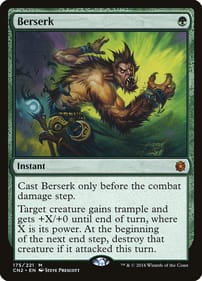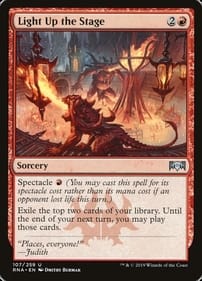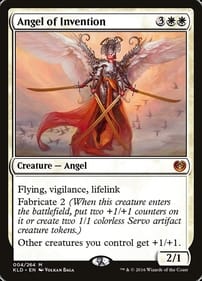Merc With A Mouth Crashes Into Dark Knight’s World
By Dan Brown There’s nothing unusual about someone hiring Deadpool to carry out a contract killing. But when his latest job takes him to Gotham City, that’s when comic fans know this is no ordinary assignment. Deadpool/Batman is the latest comic-industry crossover. It shows what happens when the Merc With a Mouth (a Marvel character) crashes into the world of Batman (a DC creation). Both companies are probably hoping that by joining forces they can introduce a new generation of comic readers to the concept of industry crossovers, thus cross-pollinating different fandoms. There’s a long tradition of superhero crossovers going back to at least 1976, when Superman fought Spider-Man for the first time. Since then, they’ve become a comic fixture. (And a cultural fixture – just check out the movies like Alien vs. Predator or Freddie vs. Jason.) The story, illustrated by Greg Capullo and written by Zeb Wells, begins when Deadpool leaps through the very manor window where a bat once appeared, inspiring a young Bruce Wayne to avenge his parents by donning a batsuit. Unaware of Wayne’s secret identity, the fast-talking Deadpool explains to Wayne he has been hired to off the Dark Knight: “Some guy who dresses like a bat? Which I’m assured is grim and creepy even though that’s clearly hilarious?” (When the mutant assassin eventually comes face-to-face with the Caped Crusader, he admits he was mistaken. “Batman! You’re . .. terrifying. I hate myself for saying this, but the bat thing? It works.”) Fans of Deadpool will be happy seeing him wield a katana in each hand, and Batman devotees will be satisfied to see him brooding. It’s quite a clash of tones. In fact, those fans might find themselves questioning the book’s premise: These two don’t seem to have a lot in common, at least on the surface. Why have them become partners? Doesn’t the crazed Deadpool have more in common with someone else in the Batman pantheon . . . his nemesis, the insane Joker? Yup. Without giving too much away, the Clown Prince of Crime does make an appearance, with Deadpool labeling him a villain whose “brain is a neurospicy dopamine goblin with task paralysis and a lack of object permanence.” In other words, Deadpool and the Joker are perfect for each other. There are also backup features in this book that pair more DC heroes with Marvel protagonists. Wonder Woman teams up with Captain America, Green Arrow with Daredevil, Frank Miller’s Batman with Old Man Logan, and so on. The funniest moment among these pairings comes when Rocket Raccoon tries on Green Lantern’s ring: “Brightest day, blackest night, yada yada. Green flame on!” the genetically engineered woodland mammal cries. Considering the main story is only 25 pages long, what I would have liked to have seen is for the publishers to devote those extra 16 pages to fully fleshing out the title team-up. (There is also another crossover published at the same time as Deadpool/Batman called Batman/Deadpool, which I haven’t read yet.) With more pages, they could have expanded what is essentially an appetizer into a full-fledged meal. Also, unlike the crossovers of my childhood, the current ones are published in a regular-size comic format, so they don’t feel as special as the jumbo ones of old. Dan Brown has covered pop culture for more than 33 years as a journalist and also moderates L.A. Mood’s monthly graphic-novel group.
Are Comics At A Turning Point?
By Dan Brown Two comics-related announcements jumped out at me last week. They are both about the current state of the industry. What to make of them? I honestly don’t know. At this point, I’ve got more questions than answers. So I’m going to lay the two statements out for you, along with some thoughts, in hopes some kind of meaning will emerge. The first was a speech delivered by DC Comics President Jim Lee to comic-store owners at New York Comic Con, in which he said the company will never use artificial intelligence, so long as he’s the boss. “DC Comics will not support AI-generated storytelling or artwork. Not now, not ever, as long as I am in charge,” he promised the crowd. “Because what we do and why we do it is rooted in our humanity. It's that fragile, beautiful connection between imagination and emotion that fuels our media, the stuff that makes our universe come alive. It's the imperfect mind, the creative risk, the hand-drawn gesture that no algorithm can replicate.” “And when I draw, I make mistakes, a lot of them. But that's the point. The smudge, the rough line, the hesitation. That's me in the work. That's my journey. That's what makes it come alive. It's the product of true effort, of inspiration, and perspiration. Fans know this. They sense this.” “They can feel when something was made with care, when it cost the artist time, energy, heart, and effort. People have an instinctive reaction to what feels authentic. We recoil from what feels fake. That's why human creativity matters. AI doesn't dream. It doesn't feel. It doesn't make art. It aggregates it. Our job as creators, as storytellers, and as publishers is to make people feel something real. That's why we create, and that's why we're still here." That’s about as passionate a defence of the human element in comics-making I’ve ever heard. And, cards on the table, I have no interest in reading comics or graphic novels that aren’t created by human hands. But what if that’s what the market wants? What if young fans, who don’t have the same sentimental connection to comics history that I and my peers share, demand AI comics? Doesn’t DC have an obligation to serve the needs of those readers? I ask because, for instance, there’s an entire segment of fandom that don’t want to read about characters like Batman – they want to be Batman, which they can do via online gaming. I’m not sure those fans care who (or what) is rendering their favourite characters. The second thing I noticed last week was a social-media post (I saw it on Facebook) from legendary comic writer Gail Simone, who has penned stories featuring heroes from Superman to Batgirl to Deadpool to her own creator-owned characters. “It's been a really weird time for comics, there's no question about that,” she wrote.“But I've spoken with the very biggest of wigs at three of the top five publishers in the last six weeks and they all said the same thing: Comic sales are up, a lot.” “One also said there is a definite trend towards specifically physical things, particularly a subset, newish physical things, that people want to purchase. The message seems to be that different formats and variants and specialty items are growing in sales in a big way, while digital sales remain flat. It is honestly the most excited I have seen these companies in years.” “This is going on through the pandemic and the election and inflation and tariffs and the distribution nightmare that retailers have to deal with. All those challenges, and comics are up and rising. I'm talking physical sales from U.S. publishers. In spite of all that stuff. And several companies have produced some genuine banging hits requiring multiple printings.” “Not everything is rosey, but I think that's pretty exciting. I know there are caveats but without strong sales, nothing else matters, nothing is fixable without people getting the books. There's a lot of people who wouldn't give up . . . creators, publishers, retailers, and I'm thankful because you guys, I love this artform more than just about anything. But it all starts with readers. SO THANK YOU, READERS!” Simone’s comments echo news coming out of the same gathering where Lee spoke, New York Comic Con. A report by Heidi MacDonald of Publishers Weekly quoted numbers showing sales are up by 27 per cent at many comic shops in the U.S. “despite looming threats from tariffs, recessions, book bans, and the turmoil generated by the Diamond Comic Distributors bankruptcy.” That all sounds like good news to me. And maybe an indication AI may not be as much of a threat as some think. Dan Brown has covered pop culture for more than 33 years as a journalist and also moderates L.A. Mood’s monthly graphic-novel group.
Compact Edition Not Quite Watchmen Babies
By Dan Brown When it comes to comics, size matters. But not as much as paper quality. That’s my conclusion after checking out a mini-edition of the classic Alan Moore/Dave Gibbons graphic novel Watchmen. Published under the DC Compact Comics banner, the smaller reprint contains all 12 issues of the 1986 tale about a superhero murder in an alternate America teetering on the edge of nuclear war with Russia. I found the compact edition didn’t suffer for the reduction in size. Powerful scenes, like when Doctor Manhattan zaps Rorschach into oblivion, still pack a powerful punch. I have feeble middle-aged eyes, but I could still read the dialogue without straining. All that said, I still prefer the original edition. The only real advantage the compact version has is its portability. If I was taking Watchmen to read on a beach on a hot summer day, I’d reach for the smaller one. (Of course, if I took Watchmen to the beach, I’d be a deeply weird individual.) How much smaller are we talking? The Compact Comics edition measures 5.5 by 8.5 inches and has a cover price of $13.50. Compare that to the regular size, which measures 6.75 by 10.25 inches, and set me back $22.99 when I picked it up a number of years ago. (Both of them are paperbacks.) If you’re thinking “Don’t odd-size comics have a long history?” you’d be right. Growing up in the 1970s and going to the grocery store with my Mom, I’d see mini-digests of Archie comics at every checkout. I never bought even a single one. I suspect even today, it doesn’t matter much what size Archie comic you buy, the characters and stories likely land the same. But also in the Seventies, if a comic was momentous enough, it would be published in a huge oversize treasury edition (10.5 by 13.5 inches). Those ones were reserved for “event” stories, as when Superman fought Spider-Man in the first DC/Marvel crossover. When Superman squared off against Muhammad Ali in the boxing ring, that story also got the oversize treatment. Naturally, those bigger comics came with a premium price. The one shame about the tiny Watchmen book was the cheaper paper DC used, which diminishes the effect of its colour scheme. Colour artist John Higgins is the unsung hero of Watchmen, and his powerful colouring doesn’t get the props it deserves as an essential part of the Watchmen reading experience. He specifically chose a non-traditional superhero palette, and the story’s impact is lessened with the switch. Doc Manhattan, to name one example, just isn’t as otherworldly when the luminescent blue covering his body is toned down on the duller paper. Watchmen remains one of the best-selling comics of all time. It continues to top sales charts decades after it was published, first as a monthly comic, then a collected graphic novel. So my bottom line is, if a smaller version helps comic stores to move product, then it’s a good thing. If it turns newbies onto Watchmen, or even turns people into fans of the medium in general, then I’m all for it. I’m sure Alan Moore would have something angry to say. Dan Brown has covered pop culture for more than 33 years as a journalist and also moderates L.A. Mood’s monthly graphic-novel group.
Will New Crossovers Keep It Fresh?
By Dan Brown Incoming! A new batch of DC/Marvel collaborations begins landing in comic stores this month. As old comic fans like me well know, crossovers are an age-old marketing tradition. The question is: Can the combined talent of comicdom’s two industry leaders make them feel fresh and exciting in 2025? The collabs, one published by each company, were announced in February. L.A. Mood’s Matt Finch alerted me they were in the pipeline because he knew I would remember the ones from the 1970s and onward. Those stories take place out of regular continuity. That allows the legal wall between DC and Marvel to be torn down, the result being Superman can team up with Spider-Man, the New Teen Titans with the X-Men, Batman with the Hulk, and so on. Crossovers were once rare, momentous events. When I cast my mind back to the 1970s, I still remember being stunned at the sight of the Man of Steel and Spidey squaring off on the cover of the same comic. Although I was just a dumb kid, I understood this was something special that didn’t happen every month. That’s probably why I grabbed every crossover – typically printed in a larger format – that came my way. Since these special issues sold so well, they quickly evolved into a cottage industry within the larger comics business, and as more independent publishers popped up, those new players tried to grab a piece of the action. Batman has co-starred with Judge Dredd. Archie met the Predator once. The Teenage Mutant Ninja Turtles have taken on Flaming Carrot. Flash-forward to this year, and Godzilla seems to be omnipresent in comics, breathing fire and stomping skyscrapers in every publisher’s imaginative universe. Crossovers represent an extension of the idea of continuity: If every Marvel superhero exists in the same metaverse together, why can’t they exist alongside DC’s stable of stars as well, at least temporarily? The first of the new books will see Deadpool face off against the Dark Knight, with backup stories combining Daredevil and Wonder Woman, and Krypto and Jeff the Land Shark, in the same volume. Along those lines, this summer I found an old Wizard magazine from 1994 in a second-hand bookstore. Among the then-current industry news was a brief touting an upcoming Batman/Punisher outing. That’s how ubiquitous they became. It was from those earlier crossovers that I was first introduced to such characters as the Jack Kirby-created baddie Darkseid. (Lord knows I love Walter Simonson’s art, but how did George Perez not get the assignment when the Titans met the X-Men in 1982?) So that particular volume was instrumental in introducing each company’s fans to the other’s lineup of characters. Crossovers became a way of cross-pollinating different fandoms. Those who loved both of this summer’s big-screen superhero outings – Superman and The Fantastic Four: First Steps – may be surprised to learn that Supes was, like the Silver Surfer, once a herald of Marvel planet-eater Galactus. Yep, it happened in 1999’s Superman/Fantastic Four: The Infinite Destruction, one of the best dual efforts from back in the day. Speaking of the movies, if it’s really true that audiences are finally tiring of superhero stories, how long will it be before one of the big brains in Hollywood suggests using the same strategy on the silver screen that has worked in comics? Isn’t that the logical next step – putting unlikely heroes beside each other to sell movie tickets? I’m betting it’s only a matter of time. If the Alien and the Predator can slug it out, why not put DC heroes and Marvel’s finest beside one another in a motion picture? Indeed, how long until a single mega-company – think Disney – assembles all the characters it owns from different media in the same movie adventure? Admit it: You love the idea of Luke Skywalker partnering with Tony Stark to fight the combined villainy of Darth Vader and Doctor Doom! Dan Brown has covered pop culture for more than 33 years as a journalist and also moderates L.A. Mood’s monthly graphic-novel group.
Supes Mag Sets Stage for Movie
By Dan Brown It’s all about Superman this week. The new James Gunn-directed Supes big-screen adaptation lands in theatres Friday and I have some thoughts. One of the things I’ve been reading in the run-up to July 11 is DC Comics Presents Superman, a magazine-size publication that presents “the official comic book stories that inspired the new movie.” Included in the larger format are All-Star Superman #1, Superman For All Seasons #1, and Lex Luthor: Man of Steel # 1. Each presents a different interpretation of the character from Krypton. All-Star Superman is a what-if scenario from 2005 in which Clark Kent reveals his secret identity to intrepid reporter Lois Lane as he faces his own mortality. “All-Star Superman is the thing that we borrow the most heavily from,” Gunn has said. In Superman For All Seasons (the “spring” instalment, which came out in 1998), a high-school-age Clark must confront the fact he’s not like other teens – the scissors break when Smallville’s barber tries to cut his hair; then, he is lifted off the ground by a tornado that hits the town, yet he doesn’t suffer any injuries. He knows something is up. Lex Luthor: Man of Steel, from 2005, explores the motivation of Superman’s nemesis. For a Superman story to really work, I think, Lex has to be relatable on some level, and tech billionaires aren’t exactly looked upon warmly these days. The promo magazine is a good introduction to the character’s many incarnations down through the decades. It also carries on a long tradition. When modern Superman movies started appearing in 1978, DC released all kinds of supplementary material to create buzz and give fans a look behind the scenes at the making of the motion picture that aimed to make moviegoers believe a man could fly. The internet serves the same purpose today. In recent months DC has also put out any number of versions of 1938’s Action Comics # 1, in which the Man of Tomorrow made his first appearance – he could only leap over tall buildings at that point, full-on flying wouldn’t come for a while. So there’s a large-format version of the debut issue, a version with a foil cover, et cetera. The one reboot of Superman’s origin that seems to get no love from Hollywood is the one I am most familiar with. In 1986, DC wooed sometime Canadian John Byrne away from Marvel, where he had established himself as the hottest comic creator in the industry with long runs on Uncanny X-Men and Fantastic Four. DC was in the process of restarting its continuity after the Crisis on Infinite Earths maxiseries. So Frank Miller and David Mazzuchelli did the trick with Batman: Year One, while Byrne got the assignment for Superman. This led to my favourite Supes story of all time, 1987’s Superman No. 2, in which Lex Luthor invents a computer so powerful that it successfully identifies Clark Kent as Superman. But Luthor ignores the answer. This strikes me as the perfect interpretation of the villain: If there was a Lex Luthor, he would be able to create a machine capable of unmasking Superman. And if there was a Lex Luthor, he would be so egotistical he would not accept the truth that a milquetoast newspaper reporter secretly has the power of Superman. As for the new movie, I’m not sure what to expect. They’ve been marketing the heck out of it, but the fact they have focused in trailers on Krypto, Superman’s dog, makes me wonder. Also, much of the online chatter has been about Gunn’s brave decision to give the Superman costume trunks. Those might not be promising signs. Dan Brown has covered pop culture for more than 32 years as a journalist and also moderates L.A. Mood’s monthly graphic-novel group.




